The Best Shoes for Babies Learning How to Walk – Allow Them to Take Those First Step with Confidence!
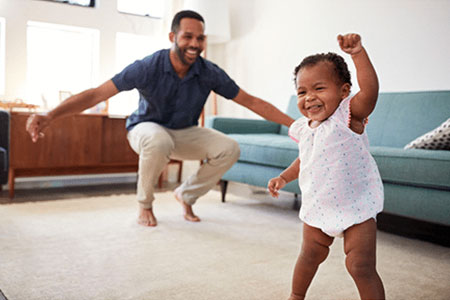
Is your baby starting to take those first steps? Most babies begin walking between 9 and 15 months, and signs like standing, cruising, or taking unsteady steps mean it’s time for their first pair of walking shoes. The best baby walking shoes offer flexibility, support, and protection—without getting in the way of natural movement. Some even feature sensory pods on the soles to boost balance and confidence. I’ve rounded up the top first walking shoes that fit various foot shapes, including medium, wide, and extra wide feet.
Key Features that Your Babies’ Shoes Should Provide
Choosing shoes for a budding walker involves more than picking the cutest pair on the shelf. It’s a decision that can impact their foot health and walking development.
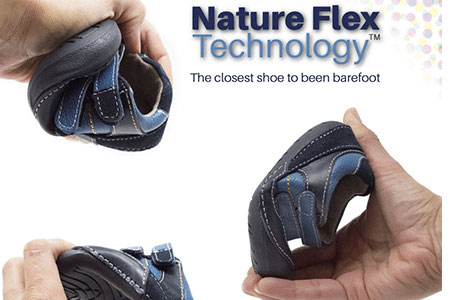
Babies need shoes with flexible soles that allow their feet to move naturally. You should be able to easily bend the front of your baby’s shoe upward about 50 degrees.
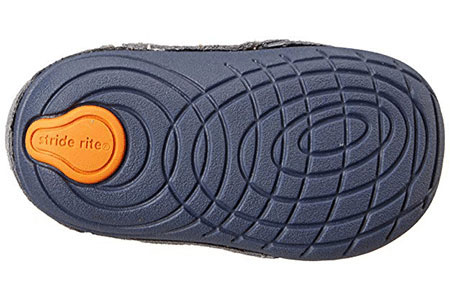
Sensory pods on the soles can provide additional feedback to your baby’s feet, helping them adjust their balance and grip as they navigate various surfaces.
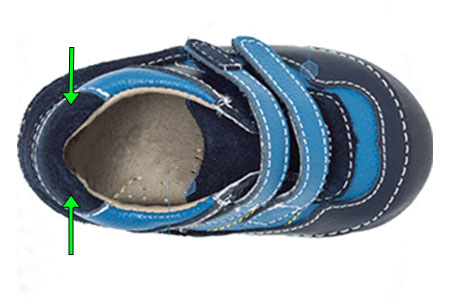
Cushioning and padding around the heel reduce the risk of blisters and irritation that can discourage walking.
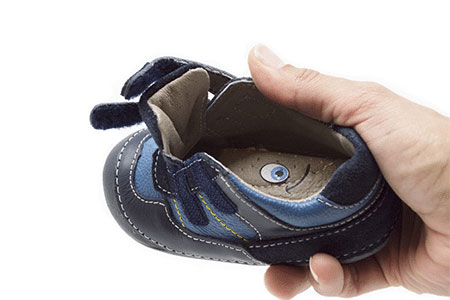
Shoes with oversized openings make it easier to slip the shoes on and off, which is particularly helpful with wiggly little feet.
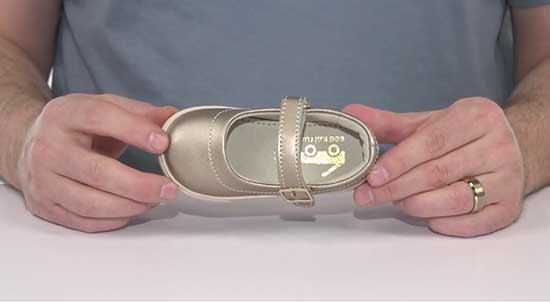
A round toe-box provides ample space for your baby’s toes to spread naturally, which is essential for proper foot development. Babies wiggle their toes as a way of exercising their feet, so it’s extremely important that you provide your baby with shoes that don’t constrict toe movement.
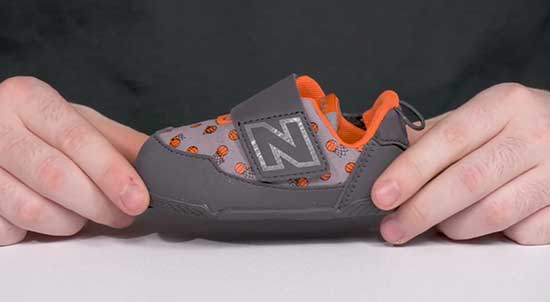
Shoes with extra depth let your baby’s feet sit deeper inside, reducing pressure on the instep and preventing rubbing or blisters on the top of the toes.
What Is the Best Shoe Material for Babies?
When it comes to materials, opt for breathable and flexible options that promote comfort and health. Leather and mesh are excellent choices as they provide durability while allowing the feet to breathe, preventing moisture buildup and reducing the risk of fungal infections. Avoid plastic, as it doesn’t breathe or stretch and can cause sweaty feet, blisters, or other skin issues.
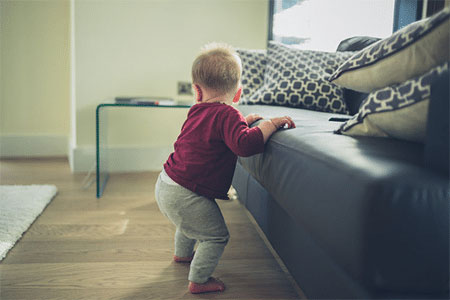
As a shoe fitter with years of experience, I’ve seen countless baby shoes come and go. Below are my top recommendations for baby walking shoes in 2025, catering to various needs and preferences. Disclosure: Keep in mind that we may receive commissions when you click our links and make purchases.
Best Shoes for Babies Learning How to Walk for Better Balance
Here’s a curated selection of the best shoes for babies learning to walk. Some styles come in wide (W) and extra wide (XW) widths, so be sure to choose the right fit for your baby’s feet.
1. Shoe Style Stevie II by See Kai Run
These See Kai Run baby shoes are a popular choice among parents for their wide toe boxes and adjustable straps, making them an excellent option for kids with wide feet.

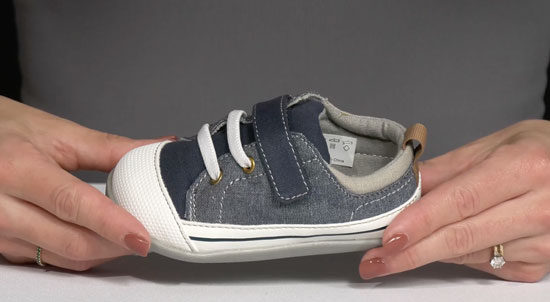
Key Features
- Order the shoe Stevie II by See Kai Run on Amazon or Zappos
- Not available in wide or extra wide widths but fits naturally wide
- Awarded the Seal of Acceptance from the American Podiatric Medical Association (APMA)
- Durable cotton drill upper, comfy leather insole, and recycled mesh lining keep feet fresh
- Breathable textile lining and cushioned insole
- I suggest that you get this shoe a whole size larger than your toddler’s current foot size
2. Shoe Style Thompson by Stride Rite
These baby first walking shoes feature a flexible sole and a rounded toe design to support natural movement, making them a favorite among parents and podiatrists alike.
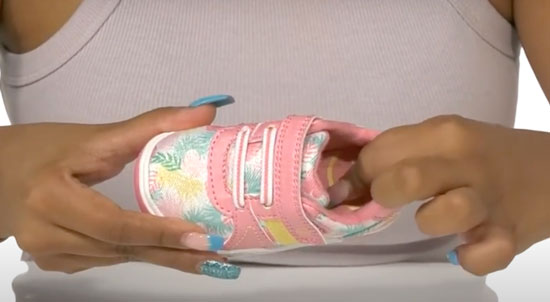
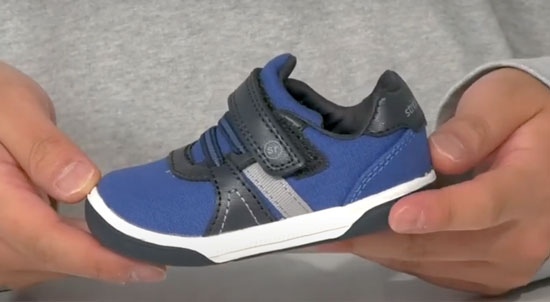
Key Features
- Order the shoe Thompson Sneaker on Amazon
- Available in wide widths
- Awarded the Seal of Acceptance from the American Podiatric Medical Association (APMA)
- Padded tongue and collar for added comfort
- Breathable textile lining and cushioned insole
- I suggest that you get this shoe a whole size larger than your toddler’s current foot size
3. Shoe Style Racer by Tsukihoshi
Tsukihoshi walking shoes for babies are lightweight, flexible, and capable of accommodating babies with wide feet and high insteps.
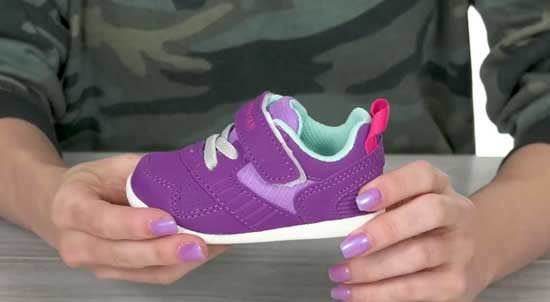
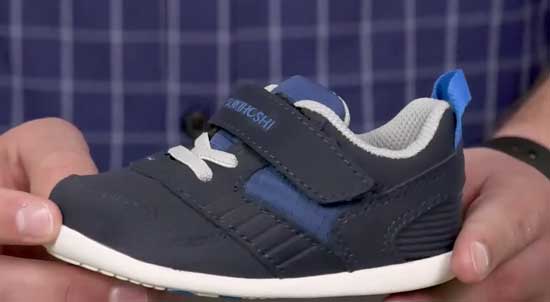
Key Features
- Order the shoe Artie and Adalyn by Stride Rite on Amazon or Zappos
- Rounded edges to decrease stumbles and falls
- Available in wide and extra wide widths
- I suggest that you get this shoe a whole size larger than your child’s current foot size
4. Shoe Style Artie and Adalyn by Stride Rite
These Stride Rite baby walking shoes are the best shoes for babies learning how to walk. They provide excellent width options (wide and extra wide) and a comfortable fit.
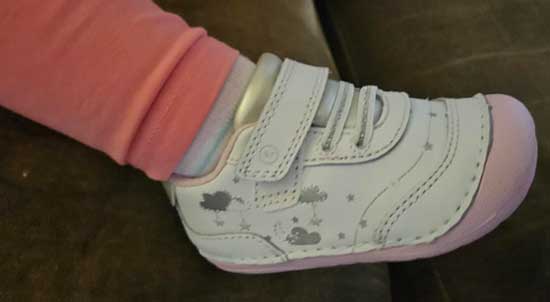
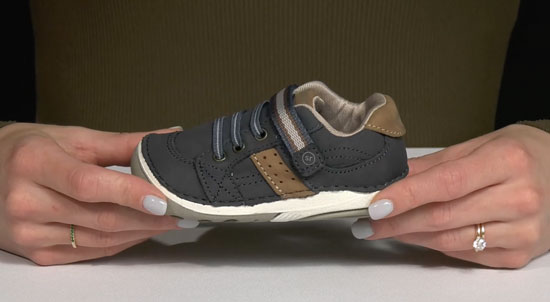
Key Features
- Order the shoe Artie and Adalyn by Stride Rite on Amazon or Zappos
- Rounded edges to decrease stumbles and falls
- Available in wide and extra wide widths
- I suggest that you get this shoe a whole size larger than your child’s current foot size
5. Shoe Style Elliott by Stride Rite
These Stride Rite booties for babies offer a stable base of support and a comfortable fit, making them a top choice for babies with wide feet.
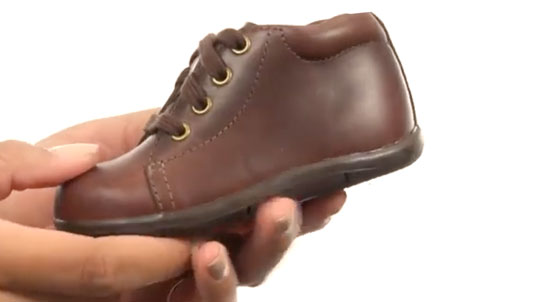

Key Features
- Order the shoe SRT Elliot by Stride Rite on Amazon or Zappos
- Available in wide and extra wide widths
- 100% leather made
- I suggest getting this shoe a whole size larger than your toddler’s current foot size
6. Shoe style Archie and Kiki by Stride Rite
These baby sandals are crafted to provide maximum comfort for wide feet. With their breathable materials and secure fit, they offer the support and flexibility needed for a growing child.

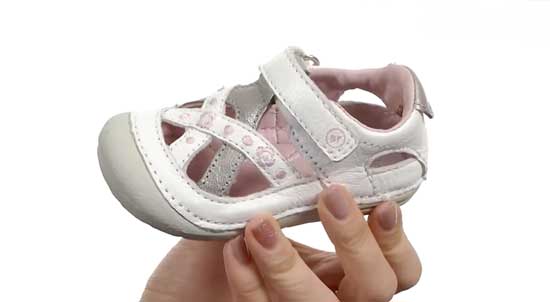
Key Features
- Order the shoe Archie and Kiki on Amazon or Zappos
- Available in wide and extra wide widths
- Leather upper
- Foam padding placed around the ankle collar and under the tongue for a comfortable fit
- I suggest that you get this shoe a half size larger than your toddler’s current foot size
7. Shoe Style Martin by Stride Rite
These baby shoes feature a wide toe box and plush cushioning, making it perfect for everyday wear.
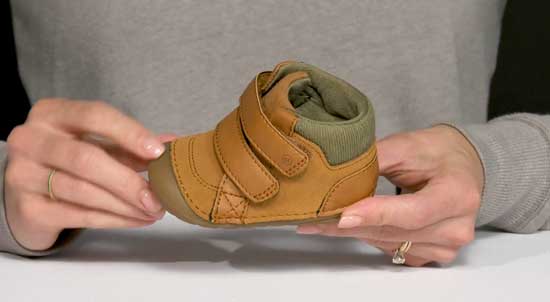
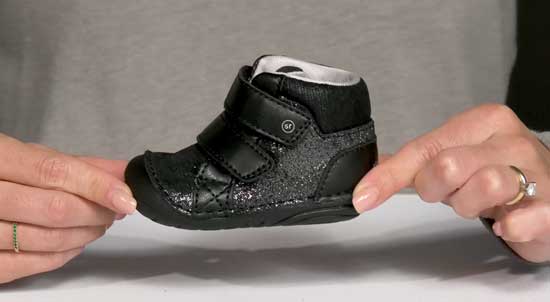
Key Features
- Order the shoe Martin by Stride Rite on Zappos
- Available in wide and extra wide widths
- I suggest that you get this shoe a whole size larger than your toddler’s current foot size
8. Shoe Style Casey by See Kai Run
These See Kai Run booties provide extra depth, rounded toe-boxes, and opens up nice and wide for easy on and off.
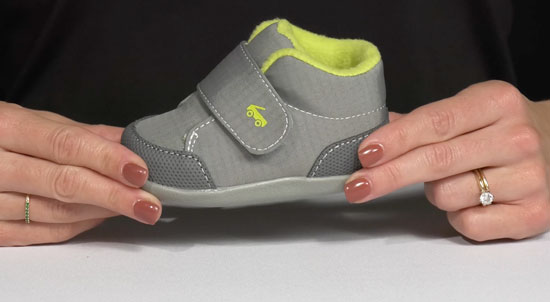
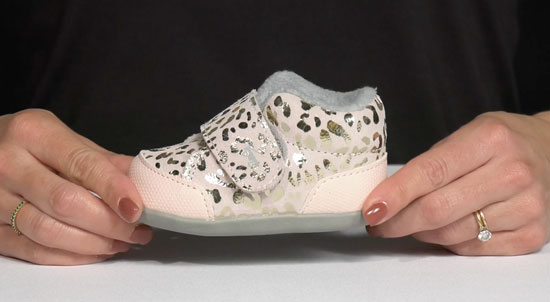
Key Features
- Order the shoe Casey by See Kai Run on Amazon or Zappos
- Not available in wide or extra wide widths but fits naturally wide
- Awarded the Seal of Acceptance from the American Podiatric Medical Association (APMA)
- Fleece lining for extra warmth
- I suggest that you get this shoe a whole size larger than your toddler’s current foot size
9. Shoe Style Lucia by See Kai Run
These baby girl Mary Jane shoes feature a roomy toe box, flexible sole, and breathable materials to support healthy foot development and all-day comfort for early walkers.
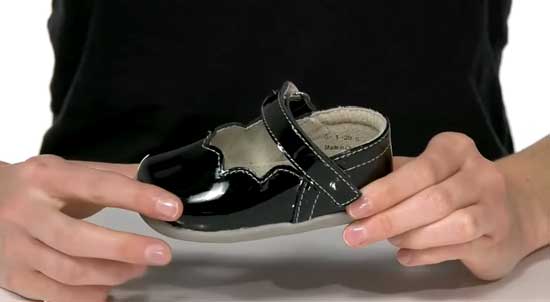
Key Features
- Order the shoe Casey by See Kai Run on Amazon or Zappos
- Not available in wide or extra wide widths but fits naturally wide
- Awarded the Seal of Acceptance from the American Podiatric Medical Association (APMA)
- Fleece lining for extra warmth
- I suggest that you get this shoe a whole size larger than your toddler’s current foot size
10. Merrell Kids’ Bare Steps Sneaker
These Merrell shoes that help babies walk are designed with a wide toe box and a barefoot feel, encouraging natural foot development.
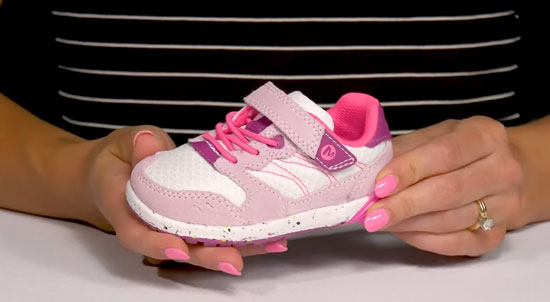
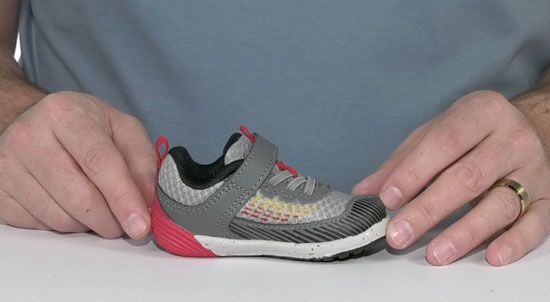
Key Features
- Order the shoe Bare Steps by Merrell on Amazon or Zappos
- Not available in wide or extra wide widths but fits naturally wide
- Awarded the Seal of Acceptance from the American Podiatric Medical Association (APMA)
- Padded tongue and collar for added comfort
- I suggest that you get this shoe a whole size larger than your toddler’s current foot size
5. Shoe style Gaia by Stride Rite
This Stride Rite baby shoe features double Velcro straps for a secure fit and fuss-free wear.
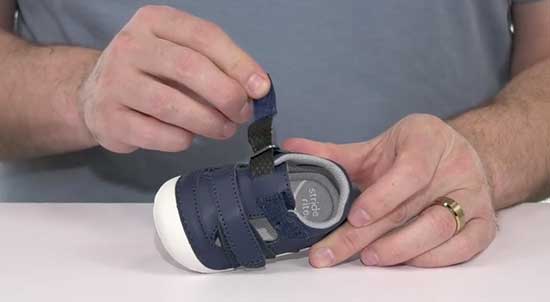

Key Features
- Order the shoe Gaia by Stride Rite on Zappos or Amazon
- Available in medium and wide widths (fits high insteps)
- APMA approved
- Round-toe design
- I suggest that you get this shoe a whole size larger than your baby’s current foot size
It’s essential to provide your baby with the correct shoe size—neither too small nor too large. Shoes that are too tight can restrict growth, reduce circulation, and cause painful issues like blisters, ingrown toenails, and calluses. On the other hand, shoes that are too big can make it harder for your baby to grip the ground, leading to instability and frequent falls. Proper fit is key to healthy foot development and confident first steps.
How to Find Your Baby’s Exact Foot Length and Shape
To make shoe shopping easier for parents, I created a virtual shoe fitting service that helps you accurately measure your baby’s foot size from home. This simple guide will show you how to determine your baby’s exact length and width—whether they have narrow, medium, wide, or extra wide feet—and whether they have a high instep. Knowing these details ensures a perfect fit and better comfort for your baby’s growing feet.
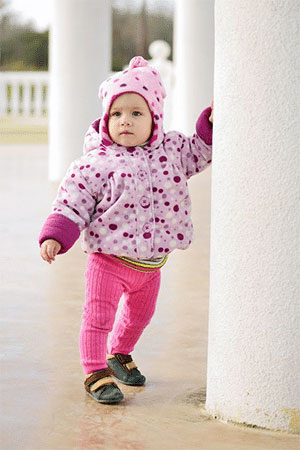
Best Baby Socks – Seamless and Breathable
Selecting the right socks is just as important as choosing the shoes, as they provide an additional layer of protection and comfort. The best baby socks should be soft, breathable, and fit snugly without being too tight, preventing slippage and ensuring a comfortable fit. Look for socks made from natural fibers such as cotton or bamboo, which are gentle on sensitive skin and help prevent blisters, providing a smooth surface for the feet.
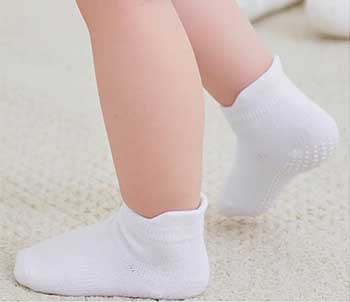
- Order these socks made by Zaples on Amazon
- Strong grips at the bottom cover the whole foot from heel to toe
- The pull tabs behind the ankle help the mom to put on and take off the socks very easily
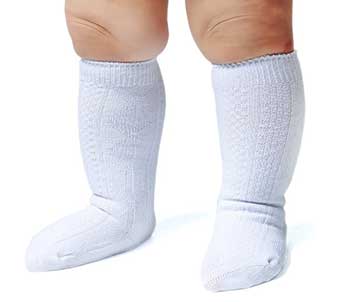
- Order these socks made by Epeius on Amazon
- 76% combed cotton, 21% polyester and 3% spandex
- Seamless cable/ribbed knit knee high socks for babies
- Breathable
- Machine wash
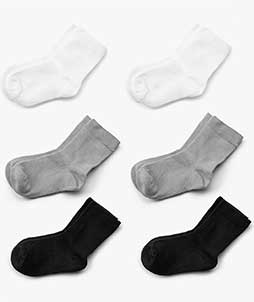
- Order these socks made by SilkyToes on Amazon
- 80% Rayon from Bamboo, 10% Polyester, 5% Nylon, 5% Spandex
- Cushioned sole to keep your child’s feet comfortable
- Machine wash
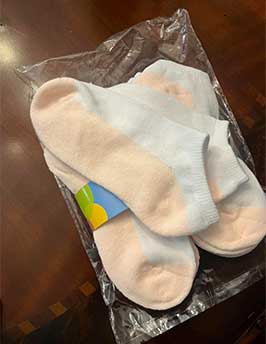
- Order these socks made by Jefferies on Amazon
- Smooth toe seam provides less irritation and bulk for sensitive toes and feet
- Made with premium ultra soft cotton
- Quarter ribbed stay-up top is extra comfortable around the ankles
Reach Out for Personalized Shoe Recommendations
Every baby’s feet are unique, and finding the perfect pair of shoes can be challenging. If you’re unsure about the best choice for your little one, don’t hesitate to reach out for personalized shoe recommendations tailored to your baby’s foot shape. As an experienced shoe fitter, I can guide you through the process, ensuring your child receives the best support and comfort as they learn to walk, taking into consideration their individual needs and preferences.

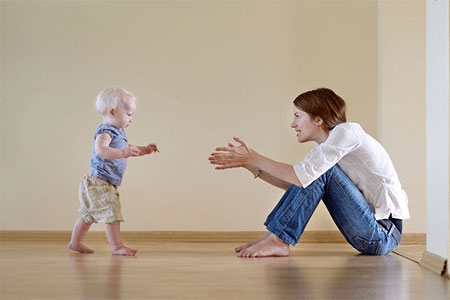
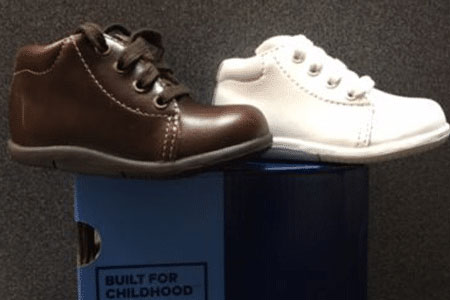
Hi, my 16M old child has flat foot. She’s still in the very early stages of walking. Would you recommend stride right or something like new balance that you show on the flat feet article?
Thank you
Hello Adi,
Keep in mind that children can develop arches until the age of five. If your daughter is still learning how to walk I suggest a pair of Stride Rite shoes, just make sure that you get them in the correct size depending on your daughter’s foot shape (narrow, medium, wide, extra wide). If you are unsure of your daughter’s exact foot shape I suggest that you follow the instructions here: How to Measure Your Kids’ Foot – 2 Simple Steps to Determine Foot Length and Foot Width
Do all of the list of shoes you recommend come with the sensory pods technology? I just had my child measured at my local shoe store and she has extra extra wide feet (that’s going to make shoe shopping so fun) the store didn’t have any shoes in stock for her that were going to be wide enough. All of the shoes you recommend here are labeled as extra wide so that’s very helpful but I want to make sure that they do provide the sensory pod technology you talk about.
Hello Janine,
Yes, all of the shoes I recommend come with sensory pods. They are all also available in wide (W) and extra wide (XW) widths.
Hello. My baby has extra wide feet and I haven’t been able to find a single pair of shoes that are wide enough for her feet. I am glad I came along your article as I didn’t know that extra wide shoes even existed. I will make sure to order the shoe in x-wide widths.Thank you.
Hello Bernard,
I am glad that you find the article informative. Stride Rite and Pediped both offer baby shoes in extra wide widths (XW).
My baby has very chubby feet and none of the shoes I have tried so far even go on his feet. I can’t keep returning the shoes back and forth. I will try the Stride Rite shoes you recommend and hope they fit. How can I make sure I am ordering the correct shoe size in length?
Hello Ann,
I suggest that you follow the instructions on this article: How to Measure Your Kids’ Foot – 2 Simple Steps to Determine Foot Length and Foot Width